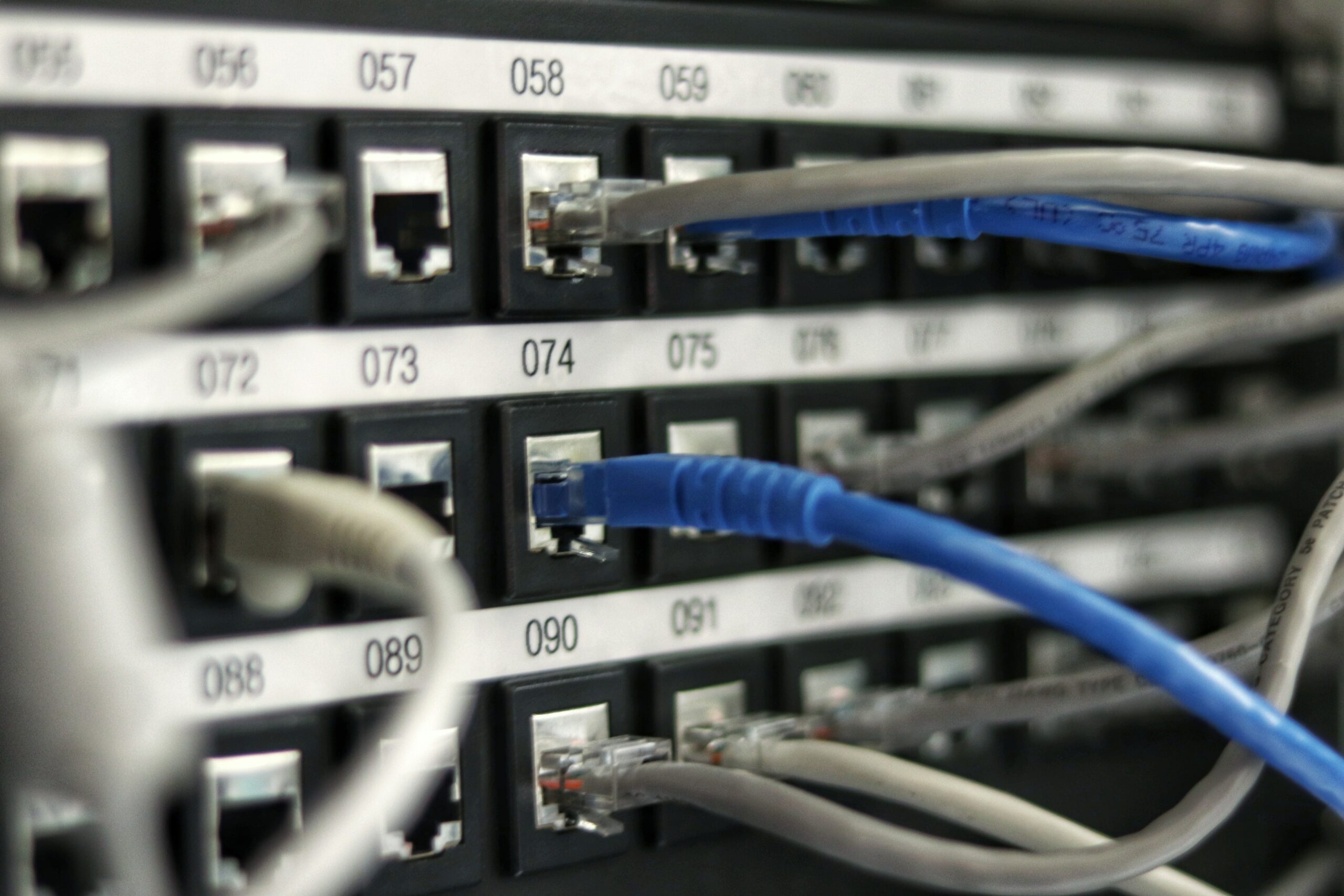
Creative, complex, and critical: when did WiFi achieve world domination?

Is there any technological resource that we depend on more than WiFi? We expect it to be available almost everywhere we go, and it seems like the world stops spinning if it ever stops working. Without it, how do we contact clients, review business analytics, or pay bills? How do we design new shoes, manufacture new cars, or monitor patient care? How do we connect with teachers or access digital educational resources? How do we talk to friends and family, and connect with the wider world?
It almost doesn’t bear thinking about, but was it always this way? Take a look at when WiFi was invented and how its reach has steadily grown wider and wider.
When was WiFi invented?
In 1985, the U.S. Federal Communications Commission announced that the 900MHz, 2.4GHz, and 5GHz bands of the radio spectrum were available for unlicensed use by anyone. Technology firms leaped at the chance to take advantage of the decision and started building wireless networks and devices. However, there was no common standard guiding technology development, so most devices from different manufacturers were incompatible.
To change this, several industry leaders came together and created the first common standard: 802.11. It was approved by the Institute of Electrical and Electronics Engineers (IEEE) in 1997. Two years later, the Wireless Ethernet Compatibility Alliance (WECA) was formed to promote 802.11. We now know WECA as the WiFi Alliance. This was the beginning of WiFi as we know it today.
What does WiFi mean?
WiFi is not an abbreviation, but rather a complete name created by a marketing firm hired by WECA. It was chosen as a pun upon the word Hi-Fi, short for high fidelity.
The 802.11 family
The first WiFi standard, 802.11, allowed for a maximum data transmission rate of 2 Mbps. It operated primarily on the 2.4GHz and 900MHz bands.
It didn’t take long to realize that 802.11 could be improved to better support businesses. This led to the release of 802.11b, which was merely the beginning in a long string of WiFi standards.
| Name | Release Year | Max Data Transmission Rate
(1 GBps equals 1,000 Mbps) |
Frequency Band |
| 802.11 | 1997 | 2 Mbps | 2.4GHz |
| 802.11a | 1999 | 54 Mbps | 5GHz / 3.7GHz |
| 802.11b | 1999 | 11 Mbps | 2.4GHz |
| 802.11g | 2003 | 54 Mbps | 2.4GHz |
| 802.11n | 2009 | 600 Mbps | 2.4GHz / 5GHz |
| 802.11ac | 2013 | 6.9 Gbps | 2.4GHz / 5GHz |
| 802.11ax (WiFi 6) | 2019 | 9.6 Gbps | 2.4GHz / 5GHz
6GHz (starting in 2022) |
The range in the maximum data transmission rates exists because of the different frequency bands, bandwidths, and spatial streams used by each standard. For example, 802.11b only used the 2.4GHz frequency band and 20 MHz bandwidth. However, 802.11ac uses both the 2.4GHz and the 5GHz band, multiple bandwidths, and multiple spatial streams. Not only does this give it a higher overall max rate, but it also means there are many more channel options available for organizations.
It’s important to note that most of these maximum rates are theoretical, and not experienced by users in the real world. This doesn’t inhibit real world users though, as the theoretical speeds are significantly higher than what is needed by end users today.
For more on data rates, refer to this article.
A constant push for more devices and faster speeds
As WiFi has developed, there’s been a constant push for faster speeds, lower latency, and less congestion and interference. This is because more and more users have turned to the WiFi to make their lives and jobs easier. In 2018, there were 18.4 billion connected devices. By 2023 – next year – that number is predicted to reach 29.3 billion. That’s more devices than there are humans.
WiFi problems
As anyone who works with WiFi knows, it isn’t the easiest technology to manage or optimize. As its reach and our dependence on it continue to grow, resolving its challenges becomes more important than ever.
Common WiFi problems include:
- Slow internet access
- Devices unable to connect to the network
- Users unable to access web-based applications or on-premise connected devices like printers
- Dropped connections
- Poor performance and quality (ex: poor video call quality)
These are only a few examples of issues that can crop up at any time, and knowing the issue is only part of the problem. WiFi IT teams must know the root cause of the issue before they can solve any problem. The ultimate fault can lie with WiFi devices, applications, hardware, software, infrastructure, non-WiFi devices, nearby networks, or anything else that operates within the radio frequency (RF) environment that WiFi networks call home.
The need to help organizations identify and resolve WiFi problems faster, more efficiently, and more affordably has given rise to a new industry – one focused on WiFi Assurance.
WiFi Assurance
Whether you can remember living in a world without WiFi or not, you probably can’t imagine your current or future life without it. It’s often the backbone of most business organizations. This includes global enterprises, healthcare, education, and manufacturing and warehousing industries. We are far past the time that WiFi was a nice-to-have feature. Now it is a need-to-have resource. Issues, especially unexpected and unintentional drops in network quality, can cost companies hundreds of thousands of dollars or more.
To keep these organizations running reliably, what is needed now is WiFi Assurance. WiFi Assurance means having easy, consistent access to the analytics and insights that are needed to automatically optimize a WiFi network so that it reliably supports whatever demand is placed on it.
This is a guarantee that a WiFi network will always be available to support whatever demand is placed on it.
IT teams do everything they can to provide this WiFi Assurance, but today’s WiFi-dependent world demands additional support. All human teams can no longer analyze the data from every connected device in real-time, identifying and resolving problems immediately as they occur. With hundreds of thousands of devices connected to WiFi networks, this task is impossible. WiFi Assurance therefore relies on the support of AI-powered WiFi automation platforms that provide:
- Real-time analytics
- Consistent end user quality metrics
- Proactive alerts
- Historical analytics
- Remote and automated troubleshooting
AI-powered WiFi automation
AI-powered WiFi automation platforms automate the proactive analyzing and testing of the WiFi network, connected devices, infrastructure, and the entire RF ecosystem. Using artificial intelligence, platforms deliver 24/7 detection, notification, and mitigation of network abnormalities.
Here’s how they deliver the WiFi Assurance that is needed to protect operational efficiency and business continuity:
Real-time analytics
Platforms need to analyze all network activity at all times. This should include activity on all frequencies and any nearby sources of WiFi and non-WiFi interference. These real-time insights are necessary if IT teams are to have the most up-to-date information and know exactly what the user experience is at any given time.
Consistent end user quality metrics
If the user experience isn’t optimal, operational efficiency suffers. This means that a WiFi network’s performance and behavior must be viewed from the end user perspective. This is where end user quality metrics come into play.
To provide this capability, platforms must work as telemetry solutions, meaning they have the capability to automatically collect and analyze end user data from devices, apps, servers, and the WiFi network. IT uses these metrics to know exactly what users are experiencing and why.
For the best ROI, these metrics should be gathered consistently. The more analyzed data that IT has access to, the more complete the picture that teams have of the WiFi network.
Proactive alerts
The faster that IT professionals are alerted to WiFi problems, the faster they can resolve them. With proactive alerts, professionals no longer need to rely on UX complaints, but can receive notification of an issue as soon as it occurs. This often allows IT to resolve problems before users are affected.
Historical analytics
Insights into what happened on a WiFi network last month are just as valuable as insights from the last hour. This is because the network ecosystem is always changing. For example, an issue could occur while IT is offsite, and teams will need access to historical analytics to remain up-to-date on network health. Or, in another example, infrastructure will slowly degrade over time, and, as long as performance benchmarks are met, this degradation won’t be obvious with only real-time analytics. It will, however, be seen with historical analytics.
To best promote WiFi Assurance, AI-powered automation platforms should provide both historical analytics and historical wireless traces. With this information, IT and other administrators can review both long-term trends and specific network performance from any time. This supports the design of budget-friendly upgrade/update plans that fit an organization’s unique needs.
Remote and automated troubleshooting
WiFi Assurance depends on WiFi problems being resolved quickly. This means that IT must be able to review the network and resolve problems from any time and any location. With remote access and automated troubleshooting, this becomes possible.
This capability saves organizations time and money, and restores time and energy to IT.
Moving from a fringe benefit to a core dependency
WiFi has changed significantly since 1997, and what we know now is that WiFi network optimization is never finished. As new technologies continue to unroll – from AR/VR to IoT – we will only continue to grow more dependent on WiFi, not less.
To ensure that you have issue-free, stress-free WiFi powering your organization, ask us about a free demo or trial of the AI-powered Wireless Intelligence Platform™ (WIP). It delivers WiFi Assurance with:
- 90% faster Mean-Time-to-Resolution
- 70% fewer WiFi problem tickets
- 80% fewer remote site visits
WiFi dominates our world, but it doesn’t have to dominate our time. Use WIP today to take the complexity out of WiFi optimization.

